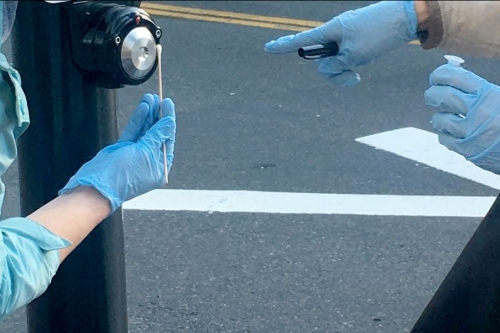Early on in the COVID-19 pandemic, the World Health Organization advised people to disinfect surfaces as a key way to limit the transmission of the SARS-CoV-2 virus. More recently, researchers are finding that transmission through surfaces does not pose as great of a risk as initially thought. Instead, studies show that the majority of transmissions occur when individuals breathe air that contains spewed droplets from infected individuals.
Professor Amy Pickering, with PhD students Abby Harvey and Julie Powers, has published a study on the risk of SARS-CoV-2 transmission on surfaces in public places. Using environmental surveillance, Pickering's team took samples from 12 locations around Somerville, Massachusetts, between April and June 2020. It found the risk of infection from these surfaces to be 4 in 10,000, less than estimates for infection through aerosols, and lower than surface-transmission risk for influenza.
In Pickering's study, the risk for contracting the coronavirus was low. However, identifying the virus on public high-touch surfaces provided a reasonable prediction of case trends in the community seven days later. For this reason, surface monitoring could be a useful tool at places like schools and bars, allowing them to quarantine before more visitors come into contact with and spread the virus.
Still, Pickering argues that time and resources spent on disinfecting surfaces should be redirected to improving ventilation and air decontamination. “Fomite transmission is possible, but it just seems to be rare,” says Pickering. “A lot of things have to fall into place for that transmission to happen.” Therefore, Pickering advises households to prioritize reasonable hand hygiene, wearing masks and social distancing over disinfecting every surface.
For more on Pickering's recent study:
Longitudinal Monitoring of SARS-CoV-2 RNA on High-Touch Surfaces in a Community Setting

